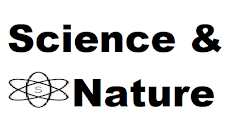Celebrated theoretical physicist and futurist Michio Kaku is used to having big ideas. A master at popularizing complex scientific ideas for the masses, Kaku recently caused a stir with a tongue-in-cheek declaration: "The Moon is not what you think!" But what does that really mean?
Let's get into the deeper meaning of this saying and see the interesting science—and speculation—about our only natural satellite in the universe.
More Than a Rock in the Sky
To the naked eye, the Moon is an inert, white rock—lovely but lifeless. But Kaku reminds us that the Moon is much more nuanced. It's not merely a passive rock hanging around Earth; it's the key to the past of our planet, and perhaps, the future of humanity.
"The Moon is a time machine," Kaku has claimed in interviews. "It contains clues to the early history of the Earth, and even the solar system itself."
Yes, since the Moon does not have weather and plate tectonics, it has preserved geological structures for billions of years. Rocks brought back by the Apollo missions have enabled scientists to reconstruct fragments of Earth's past that would otherwise be lost.
The Mystery of the Moon's Origin
The biggest mystery of the Moon is how it came to exist. The most widely accepted theory, which is called the giant impact hypothesis, is that a Mars-sized object (commonly referred to as Theia) crashed into the early Earth, and from the debris, the Moon was formed.
Kaku identifies that though this theory, popularly accepted as it is, has yet to answer questions—like why the composition of the Moon is so much like Earth's mantle, or even how such a perfectly proportioned celestial partner came to be at all.
"When you observe the Moon and how big it is compared to Earth, it's unusually large. It's not something you normally find around other planets. Something very special occurred," indicates Kaku.
A Gateway to the Stars?
Kaku also emphasizes the Moon's role in the future of space exploration. He envisions it as a stepping stone for deeper space missions—a potential launchpad for Mars, asteroid mining, or even space tourism.
"Eventually, we’ll build permanent bases on the Moon," Kaku predicts. "It’s the logical next step in becoming a spacefaring civilization."
With NASA's Artemis mission planning on sending humans back to the Moon by the end of this decade, and space companies such as SpaceX and Blue Origin looking to send missions to the Moon, this dream now appears more feasible.
Ancient Myths and Modern Theories
Obviously, any mention of the Moon also draws alternative theories—and Kaku is not oblivious to these. While he keeps his distance from the fringe, he does admit the allure and mystique the Moon has enthralled us with across civilizations and through history.
Some ancient mythologies deemed the Moon to be divine, while some contemporary crackpot theories propose artificiality or extraterrestrial influence in its creation—ideas given widespread publicity through pseudo-science documentaries and online myths. Kaku does not take these literally, but he sees why they exist.
"When science hasn't solved a mystery yet, the imagination fills in the blanks," Kaku observes. "That's the beauty and the challenge of being human."
Conclusion: A Cosmic Puzzle Worth Solving
So is the Moon not as we perceive? To a certain extent, Kaku is correct. To most people, the Moon is an inanimate object—unchanging and uncomplicated. But in fact, it is a dynamic, enigmatic, and vitally significant body that still affects Earth's tides, climate, and perhaps even life itself.
Whether as a history book, a future base, or an object of scientific fascination, the Moon invites us to look further.
As Kaku would put it: "The Moon is not merely a
rock in the sky—it's a message from the cosmos, waiting to be fully
understood."




.jpg)
0 Comments